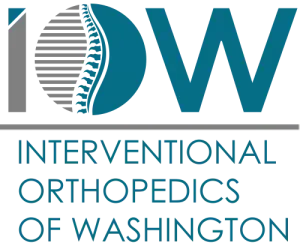Follow Us:
Open Hours
Tues - Fri 8:30 AM to 5:00 PM
Specialties
Frozen Shoulder
If you can’t raise or range your arm and it hurts to try, or your shoulder feels “stuck” in place, then you may have Frozen Shoulder, also called Adhesive Capsulitis. This uncomfortable and painful condition is often treated with NSAIDs, high-dose steroid injections, or surgery, but Dr. Silva treats this condition successfully without the use of these.
Can’t find your condition on the list?
You might be a candidate. Schedule your free discovery call and let’s explore your options.
Frozen Shoulder Q&A
What is Frozen Shoulder?
Formally called Adhesive Capsulitis, this condition can occur after a shoulder injury or surgery in people who have kept their arm immobilized for a long period of time. The condition may gradually resolve within a few years on its own if the patient is able to regularly stretch and range the shoulder, but this can be hard to do without help and is commonly very painful. Pain and discomfort from a frozen shoulder are typically felt most when you attempt to move or range your arm. The pain is usually located around the outer shoulder area and sometimes even in the upper arm.
Many people need medical intervention to resolve this condition, and while some doctors may suggest a surgery that loosens the joint capsule, or a high-dose steroid injection for pain relief, Dr. Silva treats Frozen Shoulder with a simple, non-surgical injection therapy that actually releases the capsule. Patients can see anywhere from a 40 -100 percent improvement from this procedure that very same day.
What are the symptoms of Frozen Shoulder?
If you can’t raise or range your arm and it hurts to try, or your shoulder feels “stuck” in place, then you may have Frozen Shoulder.
To determine if you have Frozen Shoulder, Dr. Silva conducts a physical evaluation, discusses your lifestyle habits, reviews any prior imaging studies, and may perform a diagnostic ultrasound evaluation.
What happens after my Frozen Shoulder is treated?
Dr. Silva’s goal is to resolve the underlying cause of your joint dysfunction to provide long-term outcomes. He may recommend lifestyle changes, dietary changes and supplements, physical therapy, joint bracing, and other types of beneficial interventions to help reduce your symptoms. He can also recommend regenerative therapies such as:
- Platelet-rich plasma (PRP) therapy that uses growth factors from your own blood to accelerate healing of your joint structures
- Prolotherapy uses a variety of irritants or proliferants to trigger the body’s innate healing mechanisms which will strengthen the joints
- Cellular therapy uses cells and growth factors derived from your own bone marrow to regenerate damaged tissues. This is the most powerful form of the regenerative procedures
Get to the root cause of your shoulder condition and heal your painful joints from the inside out. Contact Dr. Silva today by calling the Interventional Orthopedics of Washington office or using the “Book Appointment” button.
Ready to get better?
Book Your Consultation Now

Interventional Orthopedics of Washington
Fax: (425) 326-1667
Clinic Hours
Open:
Tues – Fri 8:30am to 5pm
Closed:
Sat, Sun, Mon
© Copyright 2025 Interventional Orthopedics of Washington
